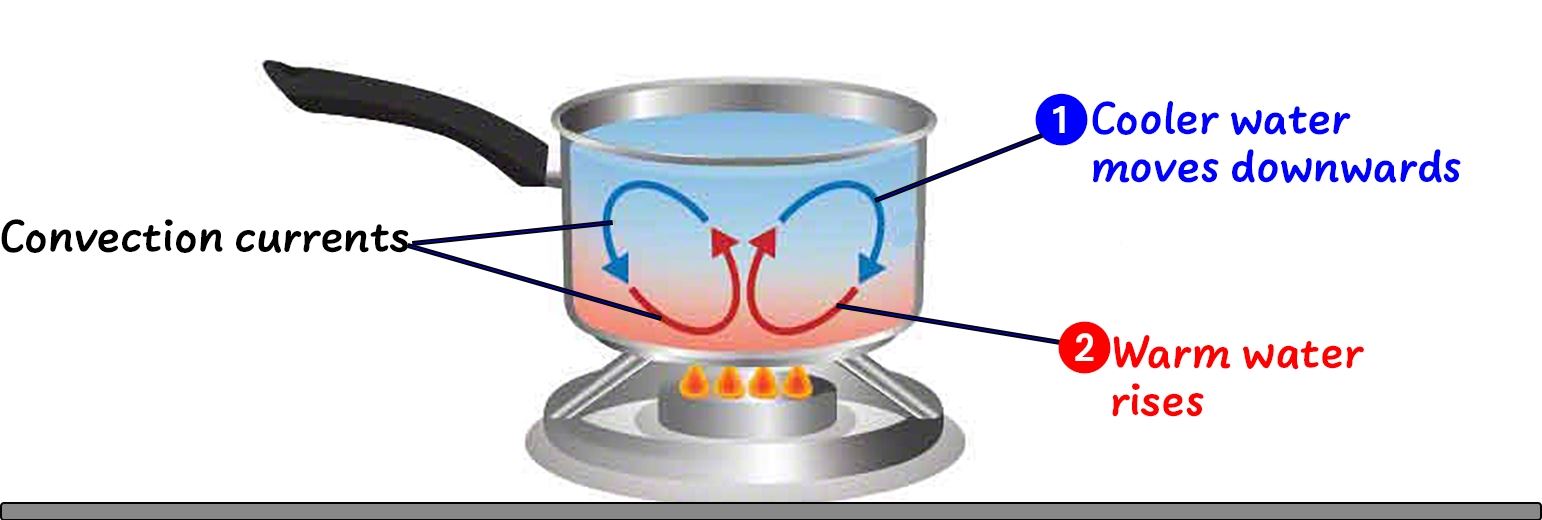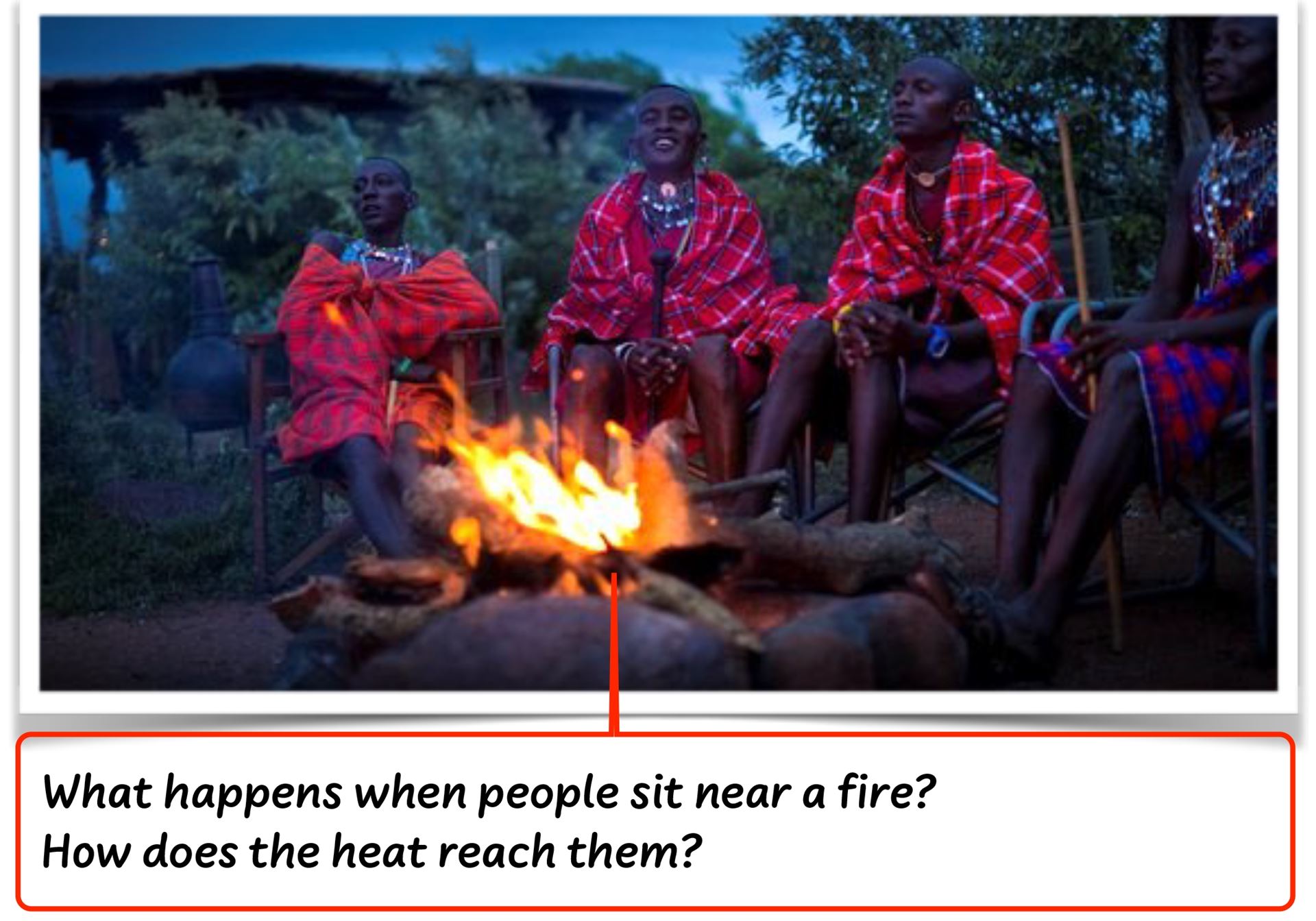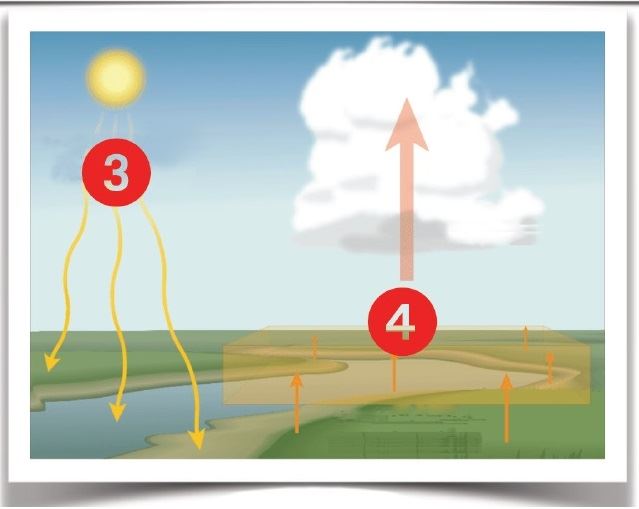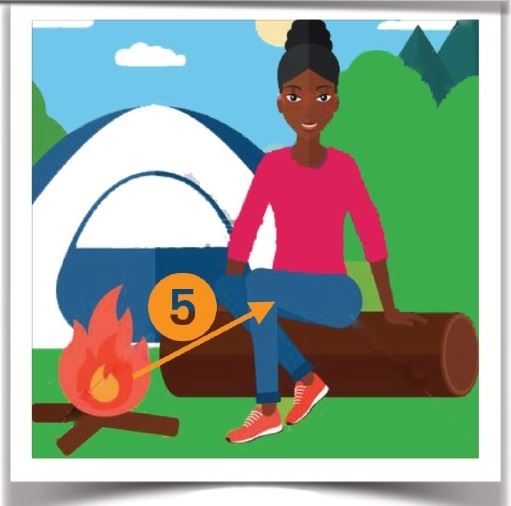Getting Ready: In our learning activities, we will:
- Demonstrate the transfer of heat in liquids.
- Demonstrate the transfer of heat in gases.
- Define the term convection.
- Identify the uses of convection in day-to-day life.
- Define the term radiation.
- Demonstrate heat transfer by radiation.
- Identify the uses of radiation in day-to-day life.
- Find out more and share the information with other people in our communities. In this way, we will develop interest in the transfer of heat by convection and radiation.
- Use locally available materials to make an improvised solar heater. This will be a project.
Activity 6.19: Learn new words
Learn the meaning of these words:
Write the words in yourjournal or in flashcards.
How will you find out? What will you use?
- The Internet?
- A printed dictionary?
- Ask your friends?
Share your ideas with others.
Heat Transfer in Liquids
What do we know?
In Grade Four, we studied the transfer of heat in solids. We already know that solids conduct heat, and that they can either be good or poor conductors of heat. Discuss some conductors of heat with a deskmate.
Activity 6.20: Demonstrating how heat is transferred in liquids*
Remember to take care of yourself and others when working with heat. Caution: Take care of yourself and others when handling heat or hot objects, foods and liquids.
Observe the following at home:
- Beans, maize or any other grains or legumes being boiled in water.
- Water getting heated. Record what you observe.
Study these pictures. Record and discuss your observations.
Answer these questions:
- What happens to the seeds and grains as the water gets heated and boils?
- How does the heat from the fire get transferred to the pot in order to cook the bean seeds or maize grains?
- Why do you think that happens?
- Draw a simple picture to show your observation.
* Safety kit: Caution: Heat can cause burns and scalds. Be careful with heat. Ensure that you and others are safe.
Learn more. Grow. Share the knowledge with your family and community members
- When water is heated, bubbles form at the bottom of the pot. They then rise and circulate in the water.
- The water at the bottom of the pot gets hot. The heat is then transferred in the water. When beans or maize are being cooked, they first settle at the bottom of the pot.
- After boiling, they keep coming to the surface and going down to the bottom of the pot.

Heat Transfer in Gases
Activity 6.21: Demonstrating how heat is transferred in gases
Work safely in groups. You will carry out an experiment to demonstrate heat transfer in gases. You will need a source of heat and pieces of paper.* Drop the pieces of paper over the source of heat.
What happens to the papers when dropped over the fire? Observe, discuss and record your findings.
- Have you ever tried to warm your hands as shown the picture below?*
- How does the heat get to transferred to your hands? Talk about it with a friend.
- With the guidance of your teacher, use digital devices to find out the meaning of the termconvection.
* Safety kit: Caution: Be careful with heat. Always be careful with fires. Heat can cause burns and scalds. Always ensure that you, others, and property are safe. Your teacher will demonstrate this activity.
Learn more. Grow. Share the knowledge with your family and community members
When water is heated, it becomes lighter and rises. Cold water, which is heavier, moves down to occupy the space left by the hot water.
Hot water currents carry beans and maize upwards. They are carried down by cold water. The movement continues as heating continues. These movements are called convectional currents.
When air is heated, it becomes lighter and rises. Cold air, which is heavier, moves downwards to occupy the space left by the hot air.
The pieces of paper move upwards above the fire. They are pushed upwards by hot air. This movement is as a result of convectional currents.
Heat is transferred through liquids and gases by convection. Have you observed convectional currents at home? Describe what you have seen.
Transfer of heat
Activity 6.22: Demonstrating convection of heat
You need
- a convection box with two openings
- a candle
- a box of matches
- a piece of paper or cloth.
- Place a candle directly below opening A
- Place a cloth that is burning slowly with little or no flame (called smouldering) above opening B
- Observe and record what happen
- The smoke produced by the burning rug goes into the convection box through opening B and escapes through opening A.
- The candle heats the air around it. This air becomes hot and lighter and rises to escape through opening A.
- The heavier and cooler air sinks to the bottom of the convection box to replace the hot and light air that has escaped.
- Arrows A and B show the convection currents in the box.
- Arrow A shows how the hot and lighter air rises to escape through opening A.
- Arrow B shows how the cooler and heavier air sinks to the bottom of the convection box.
- Wind is caused by the movement of convection currents.
- As hot air moves upwards, it is replaced by cold air. The moving cooler air is called wind.
- During the cold weather, we wear warm clothes. These prevent convection currents from carrying warm air away from our bodies.
- Convection currents help to ventilate our living areas.
- Convection of air currents helps to circulate cold and hot air in the atmosphere.
- The heating element in an electric kettle is placed near the bottom to allow the circulation of heat currents in order to heat the water uniformly.
- Convection is used in flying hot air balloons.
Activity 6.23: Application of convection in day-to-day life
Work safely in groups. Study and discuss the pictures labelled 1 to 4.
Heat Transfer in a Vacuum
Activity 6.24: Demonstrating the meaning of radiation
Work safely in groups. Study this picture and talk about it

How does the heat reach their legs?
Activity 6.25: The transfer of heat by radiation
Work safely in pairs. Study pictures 1 and 2. Discuss the questions.
Read this story
Makena was told by her mother to put water in a basin and keep it outside in the sun.
After one hour, the water was very warm. Makena’s mother used it for bathing.
Answer these questions:
1. What made the water to become warm?
2. How did the heat from the sun reach the water in the basin?
Activity 6.26: Find out more about transfer of heat by radiation
Learn more. Grow. Share the knowledge with your family and community members
- Heat from the sun reaches us by radiation.
- Heat from a fire reaches our bodies by radiation.
- Heat transfer by radiation is invisible to our eyes. It is not affected by air flow.

1.
2.

3.
4.

5.